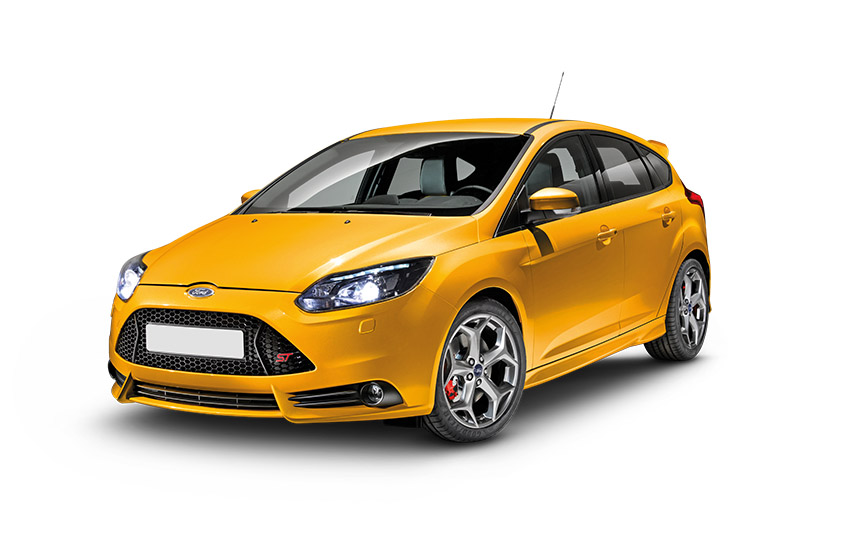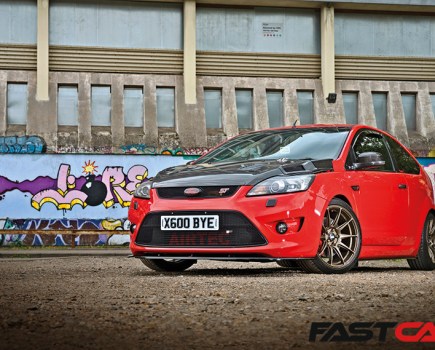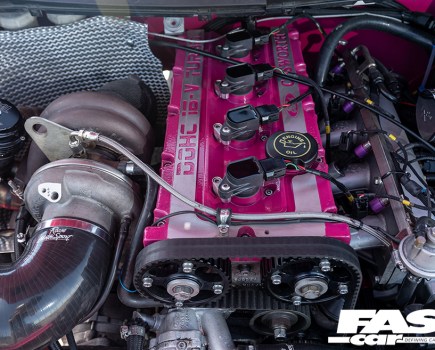Fast Fords don’t come any more fabulous, fun and frugal than the Ford Focus ST Mk3 – the best-value all-rounder in the Blue Oval world, offering fantastic handling, immense practicality and tuneability to rival an RS.
With Ford deciding to phase out production of the Focus, we suspect prices for older generation cars to climb. The Mk3 Focus ST, launched in 2011, introduced the new EcoBoost engine, and moved away from the hugely popular five-pot. And while the noise from the exhaust didn’t quite match its older sibling, its performance more than made up for it. Today, we feel its one of the best used cars you can buy, with prices only expected to rise in the future. Here’s what you need to know before buying one.
Why you want a Ford Focus ST Mk3
- ST250s are amazingly good all-rounders, as capable on track as they are blasting down B-roads, cruising motorways or popping to the shops. There’s even an estate ST available.
- Tuning a Ford Focus ST Mk3 turns it from family wagon into RS-chasing hot hatch, with even a basic Stage 1 remap making for massive grins.
- Second-hand prices are starting to level out, so there are some real bargain STs on the used market – even previously-modified machines.
Why you don’t want a Ford Focus ST Mk3
- Tiresome comments will always come from people moaning it’s not a three-door and that they prefer the ST225’s burbling five-cylinder soundtrack. Ignore them: the ST250 is a better car in every other respect.
- Say it quietly, but there’s a reason for the EcoBoom nickname… Still, a forged rebuild at least means you can add more boost.
- Thieves are ultra-keen on the ST250 for joyrides, ram-raids and bank jobs. You’ll need to invest in security to keep your ST safe.
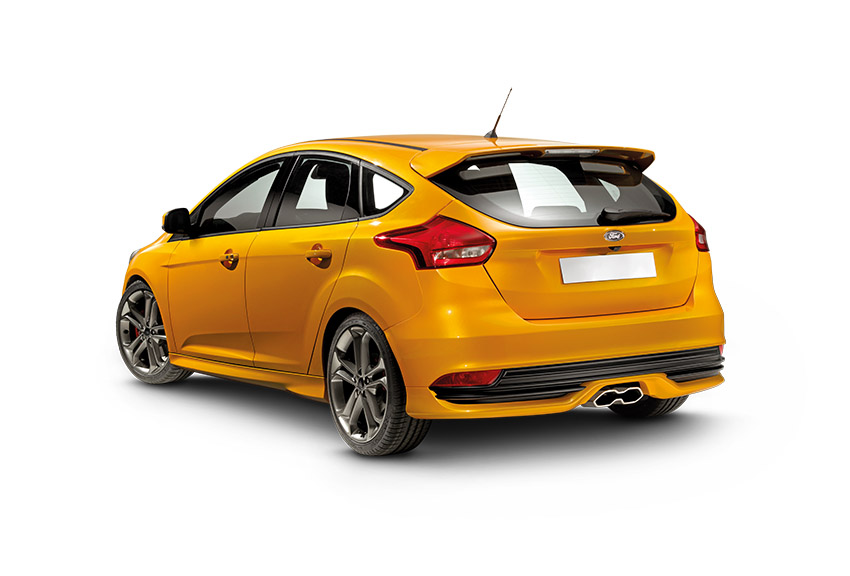
Ford Focus ST Mk3 history timeline
- February 2011 – Focus Mk3 launched, based on existing floorpan but with all-new five-door hatchback and estate bodywork, vast range of engines and trim levels, albeit no sporting model to replace Mk2 ST and RS.
- September 2011 – Focus ST Mk3 unveiled, based on five-door hatchback/estate but with 2.0-litre EcoBoost engine (250PS, thus ST250 nickname), six-speed manual gearbox, lowered and uprated suspension, big brakes, 18in alloy wheels, full bodykit and centre-exit exhaust.
- 1 June 2012 – Focus ST becomes available in UK. Trim levels are ST-1 (with monotone Recaro seats), ST-2 (colour-coordinated Recaro seats) or ST-3 (black leather Recaro seats). Around 40 other markets soon follow – including the USA – making the ST250 the first truly international fast Ford.
- Summer 2014 – Focus ST production (pre-facelift) ends.
- 29 October 2014 – Facelifted Focus ST 12-model hatchback/estate range introduced in ST-1, ST-2 or ST-3 trim with choice of 250PS petrol or 180PS diesel powerplants. Revised styling includes new headlamps and rectangular fog lamps. Cabin has redesigned dashboard layout and centre console. Mechanical upgrades include revised front springs, uprated dampers, stiffer suspension bushes, and recalibrated electrically-assisted steering. Options now include split-five-spoke 19in alloy wheels and 335mm front brakes.
- February 2017 – Focus ST-1 discontinued. ST-2 and ST-3 continue with satellite navigation now included as standard.
- June 2018 – Ford Focus Mk3 ST discontinued. Replaced by Mk4.
Ford Focus ST Mk3 key points
- Overall condition – Avoid any ST that looks neglected: Mk3 Focus cabins cover many miles without showing wear, so tatty trim suggests an abused example. Likewise, lack of servicing points to a driver who’s skimped on costs.
- Identity – Crashed, stolen and cloned ST250s are common. Similarly, most have been bought on finance. Don’t spend your money without investing in a comprehensive history check.
- Body – Look for rusty rear wheelarches, lacquer peeling off plastics, flickering headlamps, poor panel gaps and dodgy paintwork. Flapping door seals are free with every purchase.
- Engine – Smoking and misfiring can point to piston ring land failure, an impending rebuild and empty bank account. Plumes of steam suggest a cracked cylinder head and equally catastrophic results for your credit card.
- Suspension – Even a mega-mileage Ford Focus ST Mk3 should handle superbly, but worn bushes take the edge off handling. Beware of PAS problems, which mean a new steering rack is required, along with big bills.
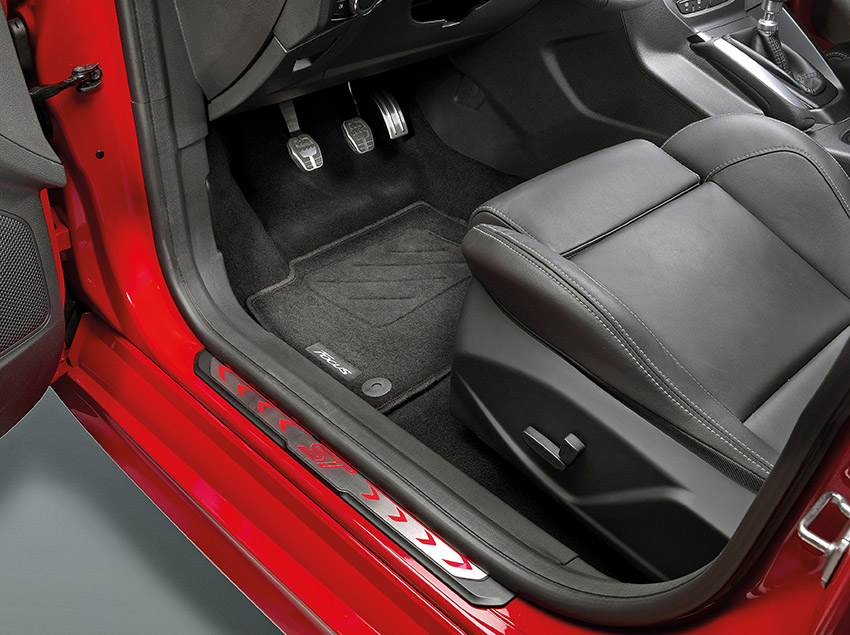
What to look out for when buying a Ford Focus ST Mk3
Identity
Focus ST250s are a favorite of light-fingered thieves – especially ST-3s with keyless entry. Loads have been stolen, and plenty are running around on fake IDs and cloned plates. Plenty have been repaired after being accident-damaged, and many are subject to outstanding finance – so paying the seller doesn’t buy ownership of the car. It’s absolutely vital to invest in a decent history check with guarantee (and not just a cheap phone app) before handing over any cash.
Compare the VIN number with the logbook and digits printed on the car: find the VIN on a sticker at the bottom of the driver’s-side B-pillar and on a tag on the left-hand-side of the dashboard (visible through the windscreen from outside).
Ensure the car you’re buying tallies with the spec. For example, all facelift ST-3s came with xenon headlamps, cruise control and rear parking sensors, but the leather Recaros are often swapped into lesser models. Meanwhile, the Style Pack included rear privacy glass and red brake calipers – although, to confuse matters, privacy glass was a stand-alone option, and the red calipers were fitted to facelift ST-3s.
Beware of cheap cars, especially in ST-1 spec, which were often used by police forces (generally in estate form) and have considerably less value due to having led very hard lives.
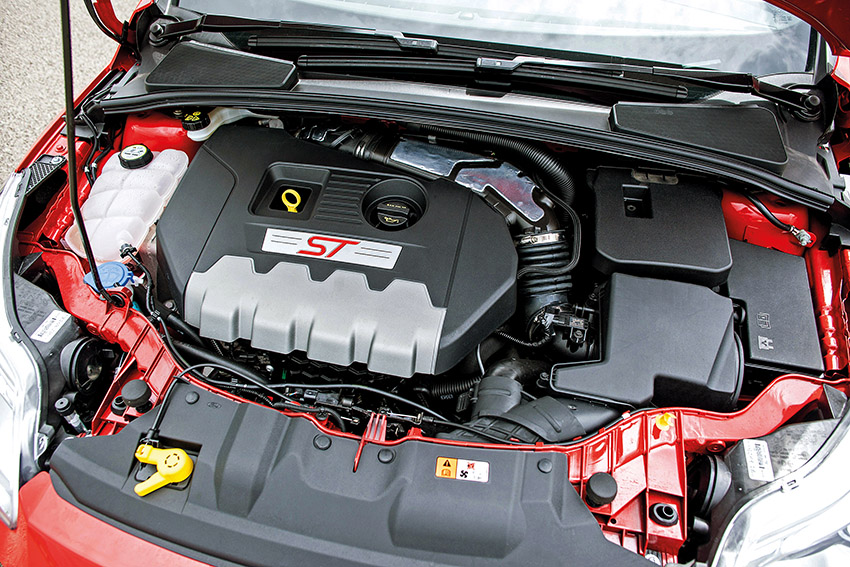
Ford Focus ST Mk3 Engine
EcoBoom? Not really. Although the Ford Focus ST Mk3 and its turbocharged 2.0-litre can go bang, it doesn’t tend to happen to standard engines. Gary at Collins Performance has seen problems only on cars mapped by other (less trustworthy) tuners. Indeed, Collins has a customer with 170,000 miles on an untouched ST bottom end.
The safe limit before forged internals is just over 300bhp, although some see 315bhp without a fault. Knackered pistons are common on standard engines that have been mapped badly and/or running too much boost/ignition advance, which causes ring land failure. Symptoms include misfiring (especially at start-up), smoke from the exhaust (getting worse in severe cases), lack of power, and running on three cylinders; any of the four pistons could have failed, and will exhibit a reading of roughly half the other three on a compression check.
Heavy knocking noises at start-up are another sign of piston problems, but don’t worry about a light tapping at idle, which is typical of the stock fuel injection system.
ST forums will tell you bad driving and LSPI (low-speed pre-ignition) are to blame. But, although it’s unwise to put undue load on the engine in high gear/low revs, Collins has never seen any issues on an unmodified ST250. It’s also worth bearing in mind the ST’s 2.0-litre EcoBoost is a better cylinder block than the Focus RS’s 2.3, and is often used for big-power builds.
Forged pistons and rods are the best solution, being cheaper than standard Ford parts, replaceable with the engine in situ, and available with lower compression ratio than the regular 10.0:1 if you plan on fitting a big turbo. Bear in mind that could be detrimental to the ST250’s driveability, which should be responsive from 2000rpm.
Exhaust smoke
Beware of smoke from the exhaust. Aside from blown pistons, blue smoke suggests turbo wear – often at high revs, especially on hard-worked car, or at idle if the car has a de-cat pipe; oil blows past the turbo seals due to the basic breather system, but uprated breathers are available.
White smoke could be more worrying. If it looks like head gasket failure – steam billowing out of the back – it’s probably coolant coming from a crack in a water jacket in the cylinder head, and straight through the turbo. It’s an internal fracture around the exhaust-to-turbo port, so it can’t be repaired. A new head is more than £2000, so the cheaper solution is to source a good second-hand head.
Collins sees lots of pre-facelift ST250s for repairs to the factory-fitted splicing in the underbonnet wiring loom on the throttle body. American STs were recalled for a fix, but British cars were generally ignored, although some had the entire loom replaced under warranty, others were repaired in situ, and the rest were left for future buyers to fix. The usual symptoms are poor idling, with revs fluctuating and the engine stalling, sometimes accompanied by a glowing management light.
Despite the lengthy checklist, the 2.0-litre EcoBoost is actually very reliable and cheap to own. It runs on a timing chain (instead of a belt), so regular replacements aren’t required, and servicing is like any regular Ford, due every 12,500 miles.
Transmission issues
Unlike the oil-burning diesel Focus ST, the petrol-powered ST250 was available only with a manual gearbox – the tough Getrag MMT6, as previously found in six-speed Ford Mondeo ST220s and turbocharged Noble sports cars. It’s highly unlikely to cause any bother.
The same can’t be said for the clutch, though. It’s limited to around 300bhp but should manage plenty more if you’re not launching it from every set of lights.
You’ll need to check for clutch slip on a test drive: cruise in third or fourth gear and accelerate hard from around 2000rpm; if the road speed doesn’t increase as the engine revs rise, the clutch is knackered.
Beware of faults with the dual mass flywheel (DMF), which will be expensive to replace. Listen for vibrations through the clutch pedal and feel for baulking when changing gear. The MMT6 has a positive and precise mechanical feel, so beware of any gear-selection difficulties, particularly on first or reverse.
Loads of Focus ST250s have been fitted with aftermarket quick-shifters, which shorten (and improve) the throw of the gearstick. Just remember that many modified machines have been driven hard, so you’ll need to be especially wary of clutch slip and piston problems.
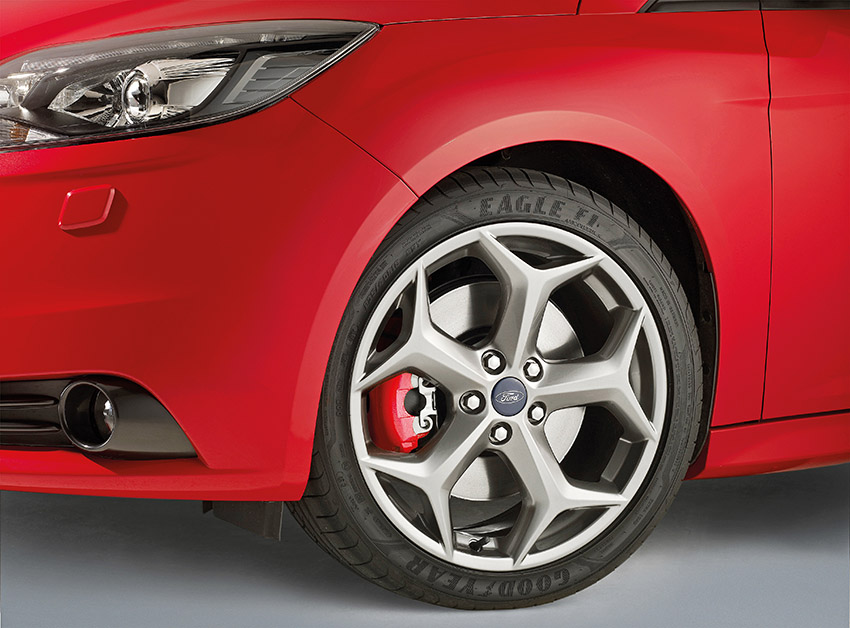
Ford Focus ST Mk3 Suspension
The Ford Focus ST Mk3 handles like every hot hatch should – with quick responses, loads of laughs and a little too much torque-steer. Pre-facelift cars are especially prone (Ford revised the suspension and recalibrated the steering for the 2015 model year), but all will benefit from polyurethane rear bushes in the front wishbones, which replace the original oil-filled components. We like the Powerflex Handling Pack, which includes all four wishbone bushes plus engine mount void bush. A variety of engine mounts are available, but many are considered too harsh for a road-going ST250, so choose carefully.
Any second-hand ST250 should handle sharply, even after lots of miles. Tired standard bushes will probably be to blame if it’s sloppy (check the rear trailing arm bushes, which are tricky to replace), although coil springs have been known to snap. Beware of inaccurate handling, which could point to poor alignment (ST250s are sensitive to wheel geometry, but bear in mind loads have been crashed) or a problem with the steering.
Some early ST250s had issues with the variable electric assistance (cured by a software upgrade), while facelifted versions were recalibrated for improved feel. Collins has seen several STs with faulty steering racks, where they suddenly lose power assistance while driving – the ST has a very quick rack, so the steering becomes incredibly heavy; a dashboard warning light will flash up too.
Rack replacement is pricey (around £800 for a reconditioned unit) and not straightforward: there are different versions depending on the model year, with alternative electronic control modules, which are integral to the rack.
Brakes
Stock ST250 stoppers are capable enough for a road car – especially with fast-road pads – although over-enthusiastic use results in juddering due to warped/contaminated discs/pads. If you feel it on the test drive, assume the car’s been driven hard. Many owners have upgraded to Focus RS Mk3 Brembo front callipers, 350mm discs and braided hoses, which work brilliantly.
Check the rest of the braking system for corrosion, especially the brake lines, connectors and rear callipers; the retaining springs rust into the callipers, and the handbrake mechanism can become sticky.
Standard ST250 wheels were 8x18in in silver, or Rado Grey as part of the Style Pack (later ST-3s swapped for Rock Metallic). Rado Grey rims are prone to flaking lacquer. Many facelift STs were had optional 19in rims (silver with Style Pack, or black with Black Style Pack), which reduce ride comfort but look loads better. Stock tyres were Goodyears, but any quality brand will do the job.
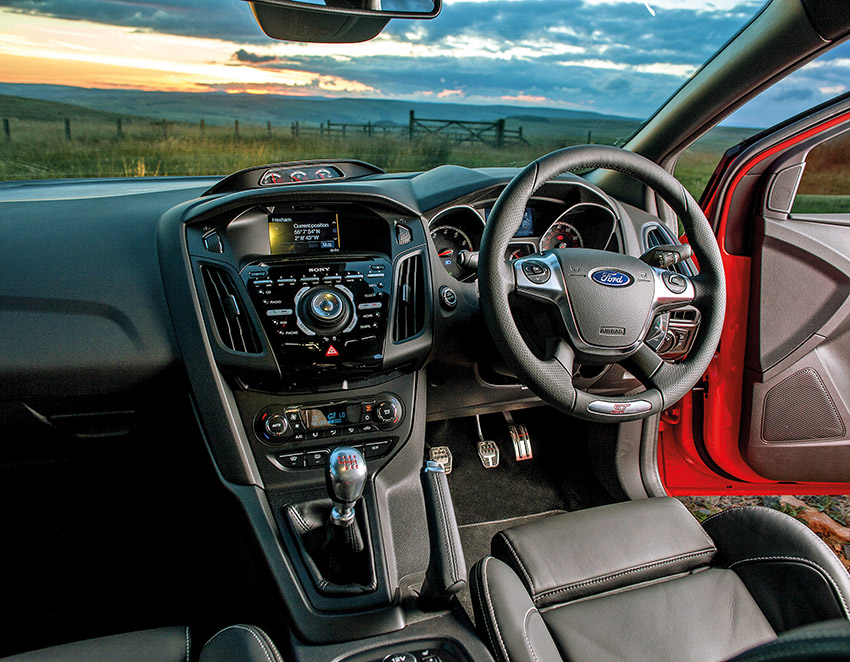
Interior
Cabin durability is excellent, although abused and neglected cars rattle from bits of loose plastic trim – especially if they’ve been removed once or twice. Avoid any scuffed-looking car, because better examples are out there. Creaking could be coming from the windscreen, especially under hard cornering; if the screen has been replaced, check the carpets for dampness.
Most buyers prefer the facelifted Ford Focus ST Mk3 due to a cleaner dashboard layout and flat-bottomed steering wheel. More importantly, ensure you’re buying the spec you need.
The ST-1 is worth least, wearing plain Recaro seats and basic air conditioning. The ST-2 is popular, featuring coloured panels on cloth seats, climate control, auto-dimming rear-view mirror, Sony DAB stereo, rain-sensitive wipers, automatic headlights and heated windscreen. The ST-3 added black leather seats, Recaro rear bench, keyless car entry and rear parking sensors.
The ST-3 and Style Pack also gained illuminated red scuff plates on the inner sills, which are extremely prone to failure and horrendously overpriced to replace. Sought-after optional extras include heated steering wheel, cruise control (extra-cost on all but the facelift ST-3), sat nav (standard on late-model ST-2s and ST-3s), premium sound system and reversing camera.
The Driver Assistance Pack (with Active City Stop, Lane Departure Warning, Auto High Beam etc) and BLIS (Blind Spot Information System, which includes Cross Traffic Alert) don’t particularly demand a premium on the used market. Likewise, the ST-2’s City Pack of Powerfold door mirrors and rear parking sensors.
Electronics
Check all the gadgets work. Auxiliary gauges sometimes fluctuate, the dual-zone climate control can be temperamental, and SYNC issues are common (although often cured by software updates). If the power-start button is playing up, it could accompany other dashboard warning lamps, and even parasitic battery drains. Beware of service lamps and dashboard displays, which can be pricey to diagnose. Examine the service history to ensure the September 2017 recall has been carried out for ineffective side- and knee-airbags.
If you’re buying an ST-3, pay attention to the driver’s seat bolsters, which will look tatty after a while, especially if the previous owner is chunky. The seat may also be squeaking.
Remember to look inside the boot. Water leaks are almost factory-fitted – usually on hatchbacks but some estates too; feel for dampness, due to water ingress through the tailgate seals, lamp clusters or air vents behind the back bumper. The cure is removal of the lights and bumper, then sealing the culprit with silicone.
Exterior
Hatchback or estate? Tuners choose the lighter hatch, but the wagon is much more practical, and handling is almost indistinguishable between the two. Estates are comparatively scarce, so expect to pay a £1000-to-£2000 premium. And if you want a sunroof, you’re restricted to the hatch – albeit as a rare optional extra.
Door edge protectors are worth searching for because they are expensive to retrofit. Beware of them falling off or getting stuck, which can damage paintwork. Regular lubrication is the answer. Door seals around the bottoms are extremely prone to peeling off, but simply need to be reattached with contact adhesive.
Corrosion isn’t a massive complaint with the Ford Focus ST Mk3, but it’s very common for the underside to look scabby and – most notably – the rear wheelarches bubbling up where the back bumper rubs against the metal of the arches and paint flakes off. Some hatchbacks also exhibit paint wearing thin around the back lights, and Ford won’t honor the anti-perforation warranty.
Accident damaged cars
Loads of ST250s have been crashed, so be especially vigilant about signs of accident damage, such as overspray, mismatched colors, creases in the engine bay or boot, or dodgy-looking panel gaps. But bear in mind the pre-facelift has a large opening between its bonnet and front bumper, which looks like the bonnet’s not shut. It can be adjusted on the rubber stoppers or bonnet latch mountings.
Don’t worry if the bumpers or skirts look off-shade because they’re all like that. Lacquer peel is also common on bumpers.
It’s normal to see condensation in the headlamps, but beware of flickering DRLs (daytime running lights), which need a software reset. ST-3s were fitted with xenon headlamps, which are desirable but costly to repair. Look for a ‘headlamp service’ warning on the dash, and make sure they point in a straight line unless cornering; check the seller hasn’t set the lamps to manual to hide a fault. Check under the offside front wheelarch, where the headlamp levelling sensor’s plastic arm is prone to snapping; the whole motor needs to be replaced, costing around £300, although a DIY repair is feasible.
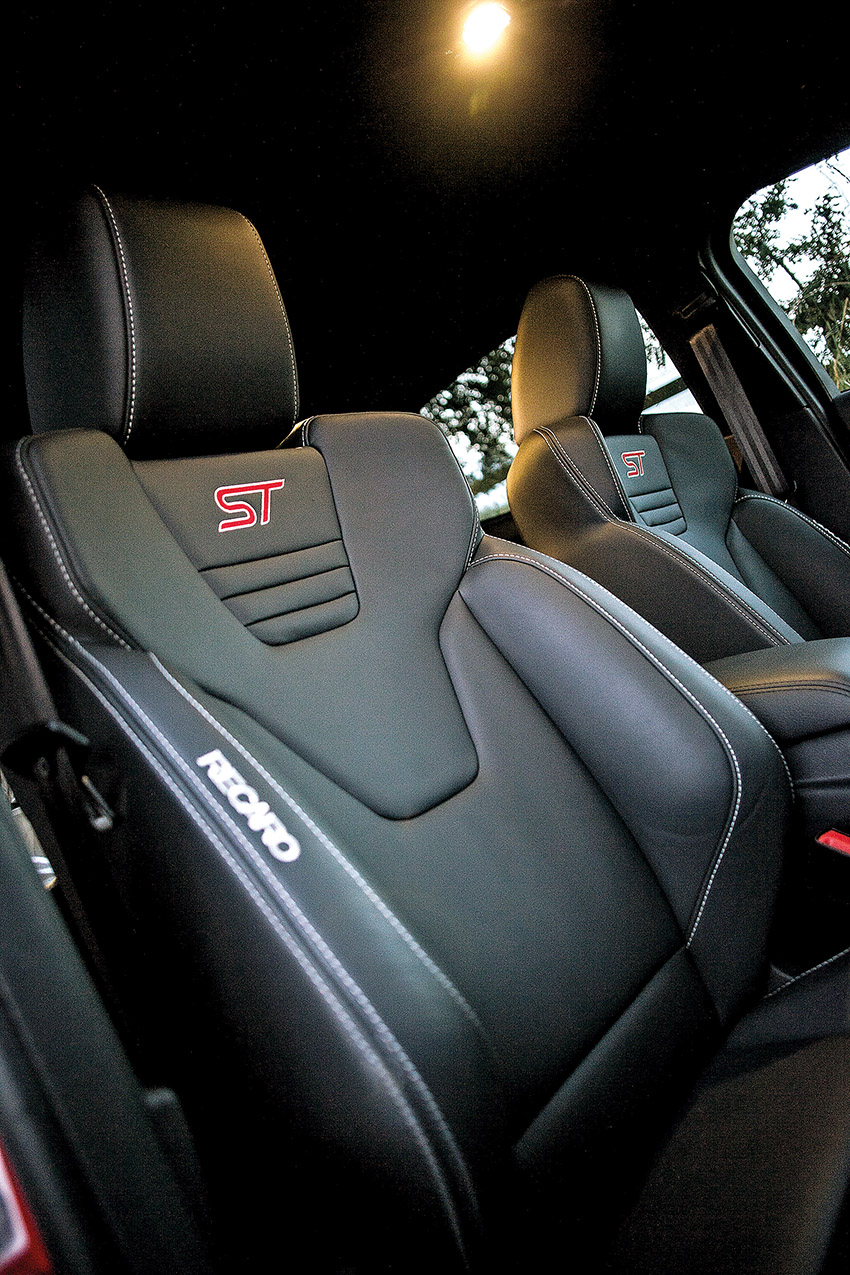
Tech Spec: Ford Focus ST Mk3
Engine:
1999cc turbocharged four-cylinder 16-valve DOHC EcoBoost with alloy block and head, 10.0:1 compression ratio, cast iron crankshaft, cast iron pistons, forged connecting rods, twin-independent variable cam timing (Ti-VCT), timing chain drive, BorgWarner K03 low-inertia turbocharger, high-pressure direct fuel injection, redesigned intake, Bosch MED17 engine management, redesigned exhaust system with twin hexagonal centre-exit tailpipes
Transmission:
Front-wheel drive with Getrag Ford Durashift MMT6 six-speed manual gearbox
Suspension:
Front: MacPherson struts, gas-filled dampers, 10mm lowered coil springs, anti-roll bar, revised steering knuckles, uprated bushes; rear: independent control blade multi-link system, revised suspension knuckles, gas-filled dampers, 10mm lowered coil springs, revised 22mm anti-roll bar; electronic stability programme (ESP), torque vectoring control (TVC), recalibrated variable-ratio electronic power-assisted steering with quick rack
Brakes:
Front: 320mm ventilated discs; rear: 271mm discs; ABS with electronic brake force distribution; optional 335mm front discs
Wheels & Tires:
8x18in alloys and 235/40×18 Goodyear Eagle F1 tires; 8x19in alloy wheels with 235/35×19 tires on facelift Style Pack/Black Style Pack.
If you’re looking for modifying advice, be sure to check out our Mk3 Focus ST tuning guide.
Words: Dan Williamson.

